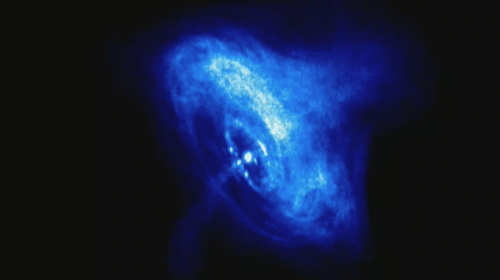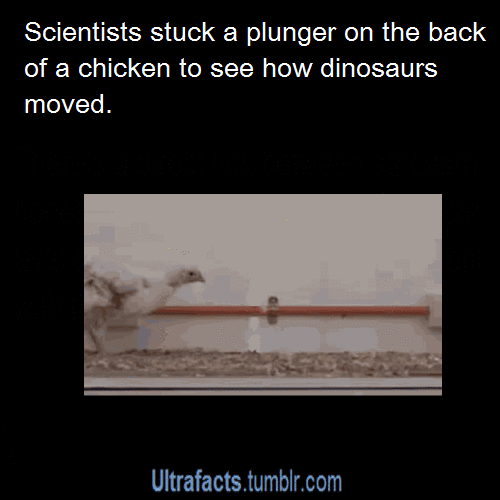Chem major, general science enthusiast, artist. They/them, left wing, Australian. Particularly keen on Physics, Chemistry, Biology, Botany, Astrophysics. For pseudo-science, mostly my half-baked physics hypotheses. Also interested in philosophy and spirituality.
Don't wanna be here? Send us removal request.
Text
Parker Solar Probe Begins Historic Journey to Touch the Sun

“This mission truly marks humanity’s first visit to a star that will have implications not just here on Earth, but how we better understand our universe,” said NASA’s Thomas Zurbuchen. “We’ve accomplished something that, decades ago, lived solely in the realm of science fiction.”
Full story at NASA’s website: X
6 notes
·
View notes
Photo
https://what-if.xkcd.com/14/
The sun would get hotter, but burn itself out sooner, if water were added. I should say "when water is added" as comets and dust containing a lot of water are continually raining (hailing?) into the sun. It's lucky for us that this is not very much compared to the sun's mass, as a lot of added water would cause the sun to heat up significantly and annihilate the earth.
Randall Monroe used to work for NASA and quit to draw stick figures having sex, so, I trust his opinions implicitly.





Sunshine
154K notes
·
View notes
Photo
Mood.
Except, water is an adequate fuel for the sun and would only make it stronger, as it contains hydrogen, the main ingredient in the sun's current fusion process. I'm not sure about the oxygen. Elements lighter than iron, including oxygen, don't consume net energy in fusion, so oxygen should not reduce the sun's output. However stars are complicated and work in a series of stages of fusion processes, so I'm not going to make any firm predictions.
Seems like a question Randall Monroe may have been asked, so I'll see if he has anything to say.





Sunshine
154K notes
·
View notes
Text
Chocolate bar in Microwave (Part-II)
This diagram of the electromagnetic spectrum finds it place in all physics textbooks:

Source
But the problem was I never got a physical sense of what that meant. It remained ‘yet another physics diagram’ for a really long time.
You see, unlike sound which can be neatly visualized using Schlieren imagery


Source: NPR
or by other unconventional innovative means,

I had no idea how to even get started with electromagnetic waves.
Visualizing the microwave wavelength using a chocolate and an oven (although not my original idea) arose out of this need to understand microwaves a little better. (Check out part-I of this post)*

But you can do more with some better but less delicious equipment.
You can get a couple of neon bulbs from an electronics shop and place them in a grid inside the microwave to view the standing wave while the microwave is in action

Source
This tells you how the heat is distributed at the bottom of the microwave oven. The lit bulbs are anti-nodes and unlit ones are the nodes .
You can also try (NOT recommended) to do this by placing a light bulb inside a cup of water instead of a neon bulbs.


Better quality gif - here
As you can clearly see the bulb only lights up in the anti-node regions of the standing wave while the remaining regions are the nodes.
You can take this a step further if you have an infrared camera .
Mark Rober had this brilliant idea of using the infrared camera inside a microwave in order to ensure that food that is being microwaved is cooked evenly and completely on the inside.

Source
And ElectroBOOM then took this to the next level by placing a cardboard box inside a microwave oven and looking at the heat map using a infrared camera.


Source: ElectroBOOM
That last gif my dear friends was the most satisfying physics animation that I had ever seen for a really long time ! It clearly illustrates the 3D standing wave heat map that is produced inside a microwave oven.
Although these aren’t the only ways to visualize the standing microwave pattern inside a microwave oven, but these are the ones that I was able to test them out with equipment that you can probably find at home or at school/university.
You are welcome to suggest more thought experiments, alternate methods or edits to this post, I would highly appreciate it!
Have a good one!
* Previous post: Chocolate bar in Microwave (Part-I)
** Why is wavelength of light important than its frequency ?
685 notes
·
View notes
Photo
There are no known solids at that temperature.

hmmm
184K notes
·
View notes
Link
3 notes
·
View notes
Text
The ancient history of nuclear reactors.
In 1942, the first human-built nuclear reactor came online. This was not the first nuclear reactor on earth.
There are about 16 nuclear reactor sites known to have operated BEFORE this. All of them were in Gabon, Africa, about 1.5 billion years ago.
They were naturally assembled by geological processes, as large quantities of uranium were deposited. They were probably brought to criticality when ground water seeped in, slowing the neutrons, leading to criticality. They probably maintained self-sustaining nuclear reactions for about 100 million years.
This is possible because a nuclear reactor is a very simple device. It requires simply an accumulation of fissile material approaching criticality, ie, enough suitably arranged mass of fissile material with slow enough neutrons to sustain a reaction.
This simplicity allowed the construction of "Chicago Pile 1" in 1942. The word "pile" is sometimes misinterpreted as a reference to Volta's "electric pile" battery. In fact, it was called a pile because it was a pile of graphite blocks and uranium cans, albeit a carefully arranged pile. There was no cooling system, the control system was built on wooden planks, and the safety system involved dropping one of these planks into the core, or throwing a bucket of cadmium salt solution over the pile. (to be fair, the safety control rod deployed automatically)
The reason modern reactors are complicated is not that it's difficult to create a nuclear reactor. They are complicated because it's hard to run one safely and controllably. Most of the complexity is to do with cooling, monitoring, control, and safety.
6 notes
·
View notes
Text
Is it common knowledge that the dinosaurs in Jurassic Park were not velociraptors?
Velociraptor was a much smaller dinosaur, about 60 cm (2 ft) tall at the hip. It was 2 m long (over 6 ft), but only because it had a very long, feathered tail. It had feathers on it’s body, head, and limbs, and its front limbs probably resembled small wings (though not large enough for flight, they must have served a purpose related to display, temperature regulation, or manoeuvring).
Velociraptor probably would not kill you, unless you were very cooperative or it was fired out of a cannon. It did have horrifying teeth and the famous claws, so it would still horribly maim you if it did not run away.
The dinosaurs in Jurassic Park were similar in form to a velociraptor, but really they were as large deinonychus, a relative. Deinonychus means “terrible claw”, and that really would have been a problem for our fictional scientists. In the movies they left off the feathers, as feathered dinosaurs were not yet the overwhelming consensus. Except in the later movies, where they, in my opinion, missed a wonderful chance for a gorgeous redesign.
57 notes
·
View notes
Photo
What the hell, that's cool.

Science Fact Friday: Bird lungs! Just like every other part of a bird, they’re weird.
This gif shows the path of a single breath, but the circuit holds 2 breaths at a time. So when the bird inhales, the just-inhaled breath goes through Inhalation 1 while the previous breath goes through Inhalation 2. Rinse, repeat. Thus, the lungs are constantly receiving oxygen - in mammals, our oxygen content dips slightly between inhalations because there’s no fresh air coming in. We also don’t empty 100% of our lung volume so some air is “stale” even during an inhalation.
Support Science Fact Friday on Patreon!
Transcript below the break.
Keep reading
3K notes
·
View notes
Text
THE EARLY WORM GETS A TURN
hi everybody, welcome to another excellent episode of Weird Biology! I definitely had some trouble picking an animal for this week.
“bunjy,” you say, wringing your hands dolefully, “it’s been a while since you did an invertebrate, maybe do one of those”
well, you couldn’t be more right!
so without further ado, I’d like to introduce you to a good, soft boy.


a good, good boy!
“oh,” you say dejectedly, still wringing your hands, “worm?”
okay first off, how dare you, worms are great. second, they aren’t even worms, despite the name. Velvet Worms are actually panarthropods, most closely related to arthropods and tardigrades (though they look more like a multi-legged velveteen slap bracelet). Velvet Worms consist of about 200 known species in their very own adorable phylum, Onychophora.
the panarthropods first wriggled into existence all the way back during the Cambrian Period, 540 or so million years ago (you know, plus or minus a few million). they have changed very little since then, making the transition onto land but keeping the adorable alien-teddy-bear look.


if it ain’t broke, don’t fix it.
Velvet Worms are found across the tropics and southern hemisphere, and reach lengths of 0.2 to 8 inches depending on species. they come in many colors, though Red Flavor is probably the most well-known. they are velvety squooshy soft to the touch, and have between 13 and 43 pairs of adorable tiny feets (depending on species). also, they don’t have a skeleton and operate entirely by hydraulics.
unlike vertebrates like you, the Velvet Worm moves by rapidly inflating and deflating parts of their squishy squashy bodies with internal fluid. just imagine that they’re made entirely of water balloons that can wiggle awkwardly in any direction.

wobble wibble wobble.
given their soft wobbly balloony body and adorable face, it may surprise you to learn that Velvet Worms are actually voracious predators. they are efficient and successful killers, mainly eating insects and other small creatures.
Velvet Worms hunt by sneaking up on possible prey and papping it gently with their retractable antenna to see if it is good for eating. which is, uh, not the stealthiest option. I mean, can you imagine if every time you wanted a snack you had to walk up to it like “LET ME JUST RUB MY HANDS ALL OVER YOU TO SEE IF YOU’RE EDIBLE, HOLD STILL PLEASE”. it seems to work okay for the Velvet Worm, though.
but anyway once it has the prey lined up in its sights, the Velvet Worm unleashes its secret weapon.

SLIME CANNON SLIME CANNON SLIME CANNON SLIME CANNON
that’s right, the Velvet Worm turns its whole face into a high-powered hose that jets a double stream of slime up to a foot away! it’s the super-soaker of nightmares. once the target is slimed, it ain’t goin nowhere. the slime rapidly hardens into a solid mess, literally gluing the victim in place.
it’s the most badass special attack of any invertebrate short of the Bombardier Beetle.

SLIME CANNON SLIME CANNON SLIME CANNON SLIME CANNON
what? how could I not be excited about what is basically a real-life Pokemon move?
moving on. after the Velvet Worm has immobilized its prey, it unleashes its even more secret weapon. hidden in that soft gooshy adorable face are a pair of razor-sharp nightmare jaws and a powerful dissolving enzyme. the Velvet Worm uses them both on its victim, making quick work of prey.
some species of Velvet Worms will even hunt cooperatively, using their x2 Combined Slime Cannon to bring down large prey they wouldn’t be able to handle separately. these hunting parties are led by a female warlord (wormlord?) who will eat her fill before the other Velvet Worms are allowed to feast.

cold, merciless and completely adorable.
this group hunting behavior shows that Velvet Worms have surprisingly complex behaviors. but it’s still got nothing on their reproductive strategy, which has been best described as “yikes”.
after a brief courtship that varies between species, the male Velvet Worm just kind of plops a packet of sperm onto the female’s back and leaves. which, not very romantic, but okay. but then the female then proceeds to dissolve some of her skin and absorb the sperm into her bloodstream. holy shit. several months later, the female gives birth to a new crop of wriggly babies. it’s a functional strategy, but probably leads to an interesting domestic life.

“don’t sass back at me mister, I dissolved my skin for you!”
though Velvet Worms in all their splendid weirdness are still commonly found across the world, we don’t actually know how they’re doing ecologically because they aren’t studied very often. we do know that Velvet Worms are threatened by habitat destruction and human expansion, and scientists suspect that individual species range from near threatened to critically endangered. this is not allowed.
conservation programs need to be enacted for these good soft boys, and soon. we hope that Velvet Worms and their many many soft gentle feet stick around for a long time to come.
–
thanks for reading! you can find the rest of the Weird Biology series here.
if you enjoy my work, maybe buy me a coffee so I can warm my cold little hands.
9K notes
·
View notes
Text
The most successful known groups of organisms
Fractals, trilobites, fish, beetles, dinosaurs, and maybe humans.
Fractal organisms had the first specific multicellular structure, an advantage over sponges, their only other multicellular competition. Trilobites and their descendants, beetles, dominate(d) the world with an astonishing variety of species, thanks to their well protected yet highly versatile structure. Fish and dinosaurs most likely dominate(d) due to their innovative modes of locomotion, powered by the spinal cord and the dinosaurs' hip respectively. Humans, if they count (the short period of evidence available makes it hard to say if we will last), most likely thrive due to intelligence and adaptability.
0 notes
Text
Joy Division?
Five Famous Pulsars from the Past 50 Years
Early astronomers faced an obstacle: their technology. These great minds only had access to telescopes that revealed celestial bodies shining in visible light. Later, with the development of new detectors, scientists opened their eyes to other types of light like radio waves and X-rays. They realized cosmic objects look very different when viewed in these additional wavelengths. Pulsars — rapidly spinning stellar corpses that appear to pulse at us — are a perfect example.

The first pulsar was observed 50 years ago on August 6, 1967, using radio waves, but since then we have studied them in nearly all wavelengths of light, including X-rays and gamma rays.
Typical Pulsar
Most pulsars form when a star — between 8 and 20 times the mass of our sun — runs out of fuel and its core collapses into a super dense and compact object: a neutron star.

These neutron stars are about the size of a city and can rotate slowly or quite quickly, spinning anywhere from once every few hours to hundreds of times per second. As they whirl, they emit beams of light that appear to blink at us from space.
First Pulsar
One day five decades ago, a graduate student at the University of Cambridge, England, named Jocelyn Bell was poring over the data from her radio telescope - 120 meters of paper recordings.

Image Credit: Sumit Sijher
She noticed some unusual markings, which she called “scruff,” indicating a mysterious object (simulated above) that flashed without fail every 1.33730 seconds. This was the very first pulsar discovered, known today as PSR B1919+21.
Best Known Pulsar
Before long, we realized pulsars were far more complicated than first meets the eye — they produce many kinds of light, not only radio waves. Take our galaxy’s Crab Nebula, just 6,500 light years away and somewhat of a local celebrity. It formed after a supernova explosion, which crushed the parent star’s core into a neutron star.

The resulting pulsar, nestled inside the nebula that resulted from the supernova explosion, is among the most well-studied objects in our cosmos. It’s pictured above in X-ray light, but it shines across almost the entire electromagnetic spectrum, from radio waves to gamma rays.
Brightest Gamma-ray Pulsar
Speaking of gamma rays, in 2015 our Fermi Gamma-ray Space Telescope discovered the first pulsar beyond our own galaxy capable of producing such high-energy emissions.

Located in the Tarantula Nebula 163,000 light-years away, PSR J0540-6919 gleams nearly 20 times brighter in gamma-rays than the pulsar embedded in the Crab Nebula.
Dual Personality Pulsar
No two pulsars are exactly alike, and in 2013 an especially fast-spinning one had an identity crisis. A fleet of orbiting X-ray telescopes, including our Swift and Chandra observatories, caught IGR J18245-2452 as it alternated between generating X-rays and radio waves.

Scientists suspect these radical changes could be due to the rise and fall of gas streaming onto the pulsar from its companion star.
Transformer Pulsar
This just goes to show that pulsars are easily influenced by their surroundings. That same year, our Fermi Gamma Ray Space Telescope uncovered another pulsar, PSR J1023+0038, in the act of a major transformation — also under the influence of its nearby companion star.

The radio beacon disappeared and the pulsar brightened fivefold in gamma rays, as if someone had flipped a switch to increase the energy of the system.
NICER Mission
Our Neutron star Interior Composition Explorer (NICER) mission, launched this past June, will study pulsars like those above using X-ray measurements.

With NICER’s help, scientists will be able to gaze even deeper into the cores of these dense and mysterious entities.
For more information about NICER, visit https://www.nasa.gov/nicer
Make sure to follow us on Tumblr for your regular dose of space: http://nasa.tumblr.com
5K notes
·
View notes
Text
DNA: more complicated than you thought
They say "DNA is a double helix", but that is a simplification. DNA can exist in secondary structures. These can affect gene expression, which can be passed on to offspring, even though the data isn't actually encoded in the genes in a traditional sense.
One example is the 'G quadruplex'. Sections of DNA with high concentrations of G bases can separate from the helix, and a single strand curls on itself into a stacked square structure.
The moral of the story is that biology is a mess and always too complicated to fully understand.
5 notes
·
View notes
Text
Quetzalcoatlus
6 meters tall, it could "stare a giraffe in the eye". 16 meter wingspan, as large as an aeroplane. A pterosaur that is by far the largest creature ever known to fly. It's estimated quetzalcoatlus could travel almost half of the circumference of the earth in a single flight, by gliding and exploiting thermals. Truly majestic.

29 notes
·
View notes
Text
Convergent Evolution
Pterosaurs and birds developed very similar beaks and hollow bones. They also independently developed wings and the ability to fly. These are true examples of convergent evolution, because none of their common ancestors shared these features. Birds evolved from dinosaurs, and dinosaurs and pterosaurs shared a terrestrial reptile ancestor, with ordinary teeth and bones. Bees and wasps are very similar in colouration, flight, colonial life, and stings. Yet these are not examples of convergent evolution, as bees evolved from wasps. Modern bees and wasps share an extinct wasp ancestor, which had all of these features.
9 notes
·
View notes
Text
Symbiosis: cabbages and wasps
When caterpillars feed on cabbages, the cabbages respond by releasing pheromones. A very effective defensive strategy. The pheromones attract wasps, which lay their eggs inside the living caterpillars. The cabbage is rid of its tormentors, and the wasps find food for their young.
5 notes
·
View notes
Photo

Source For more facts, follow Ultrafacts
157K notes
·
View notes